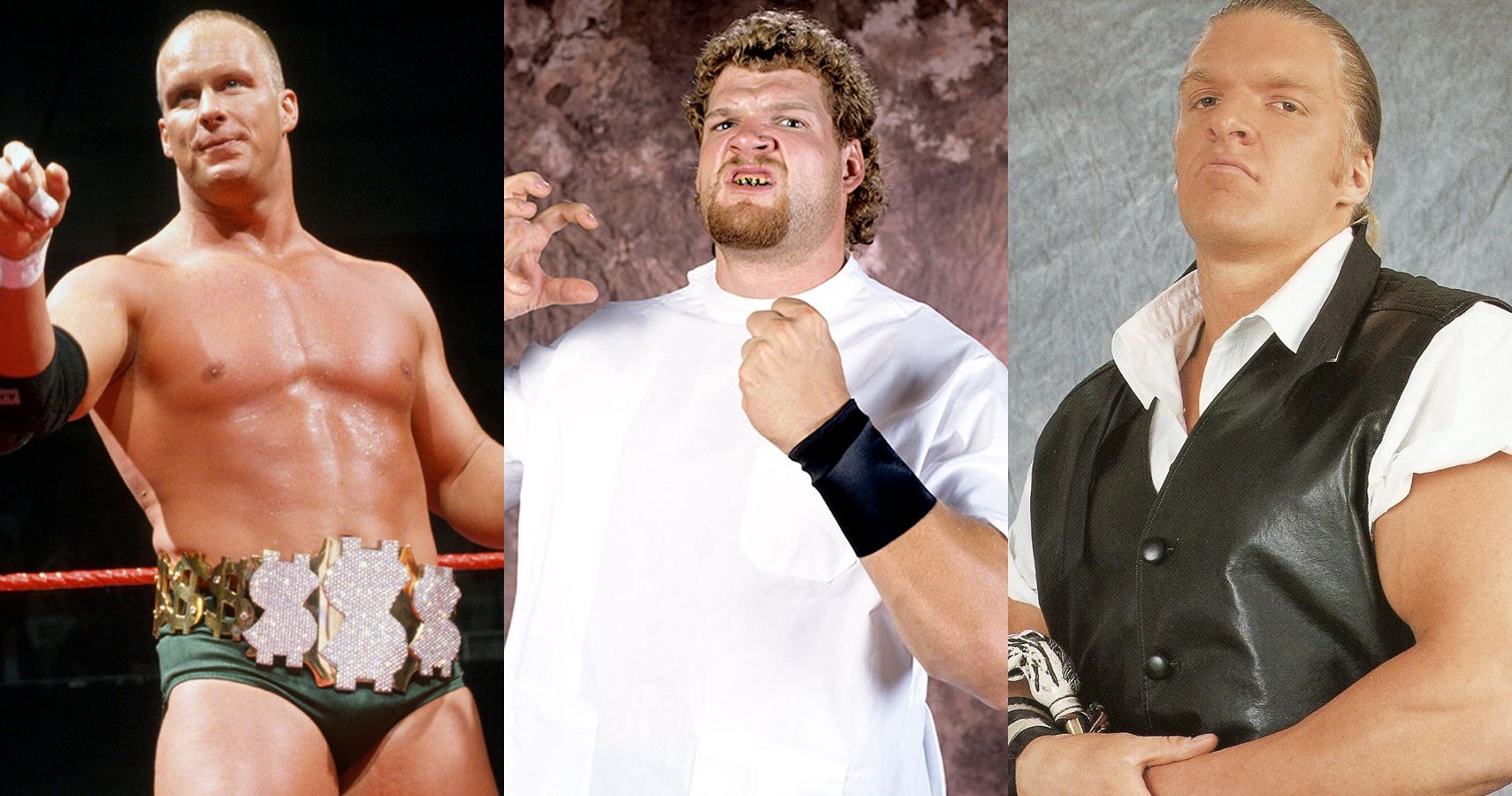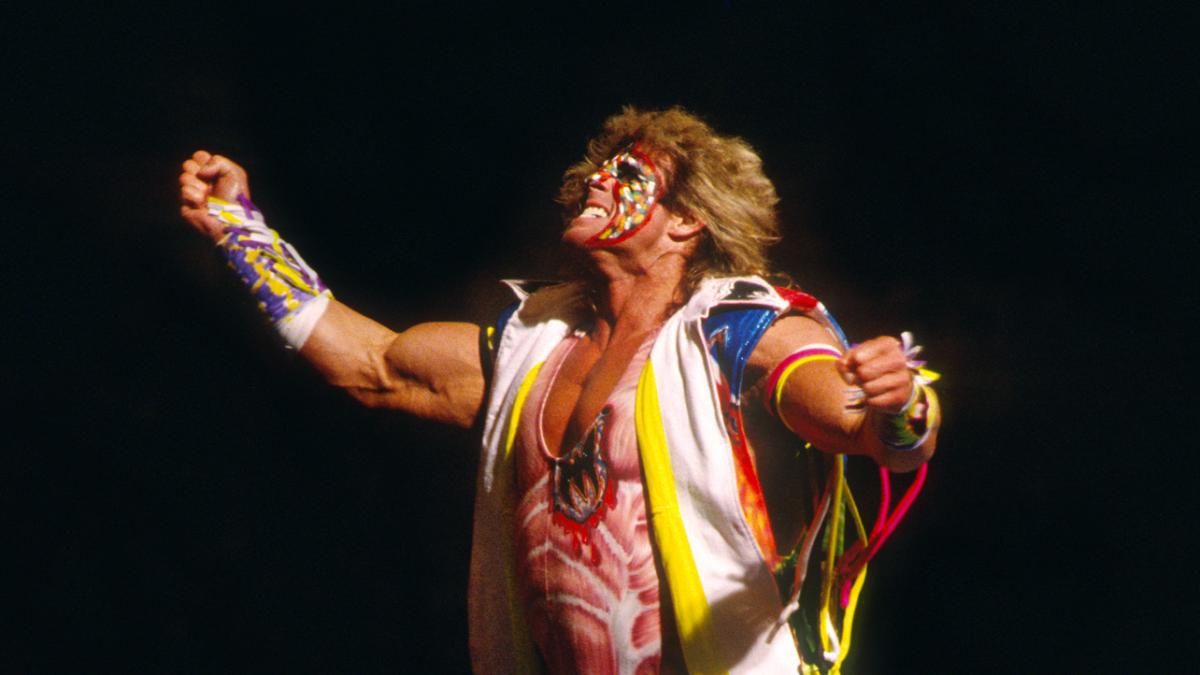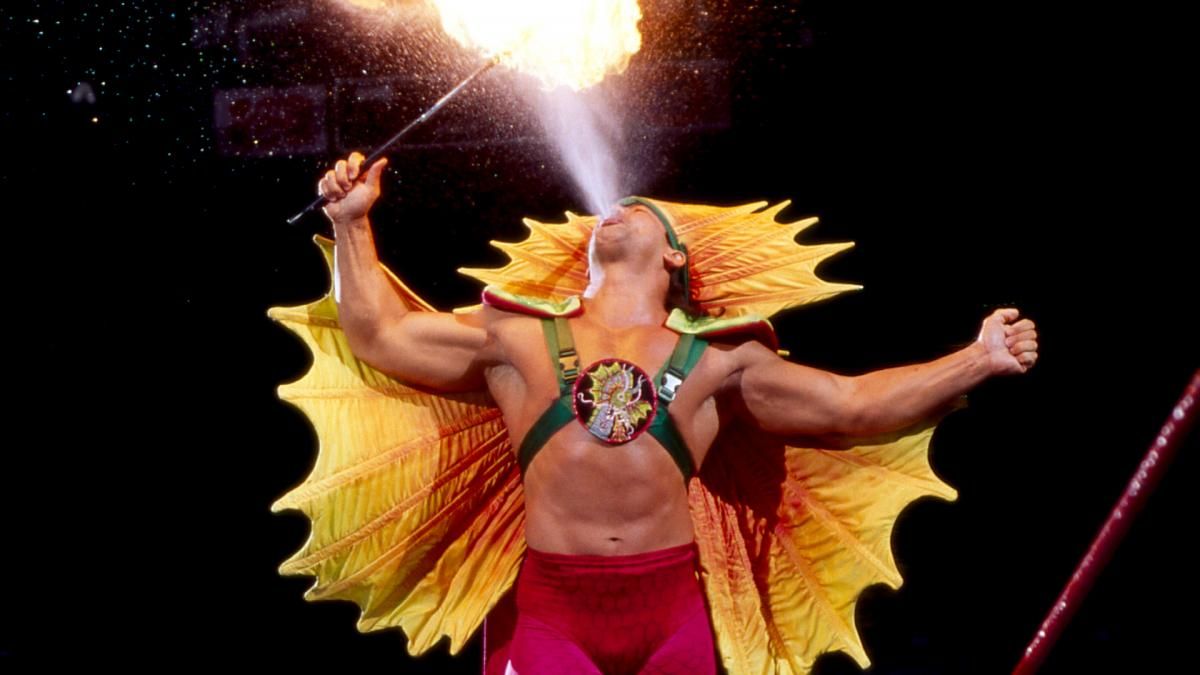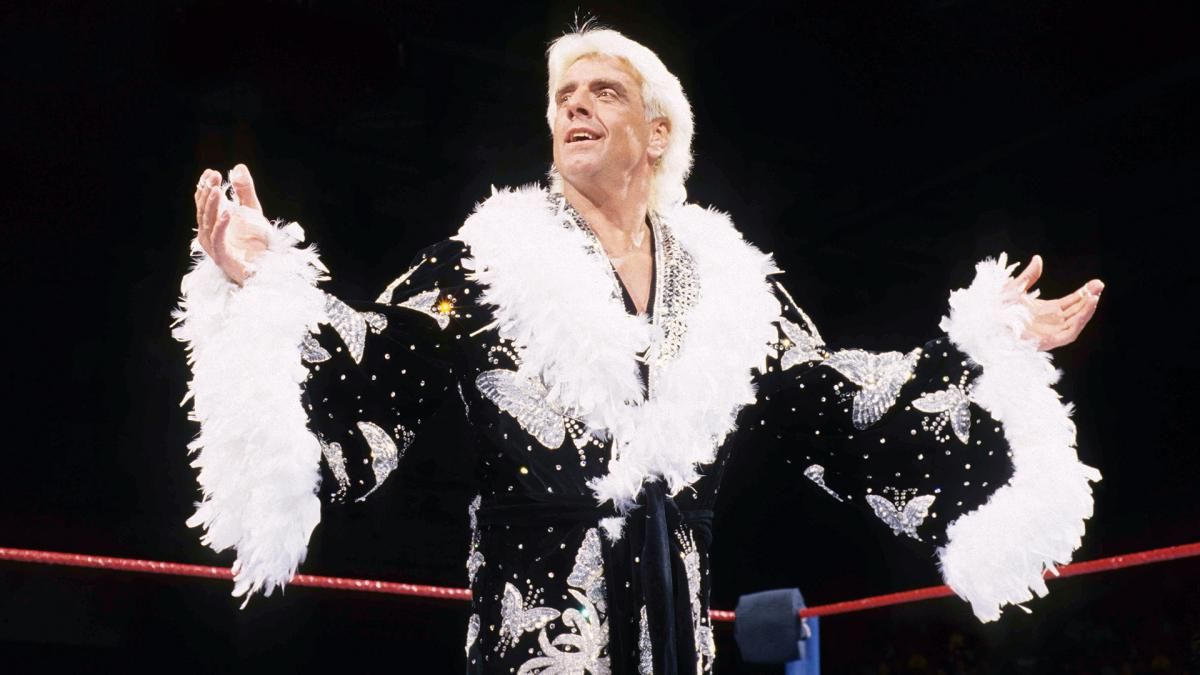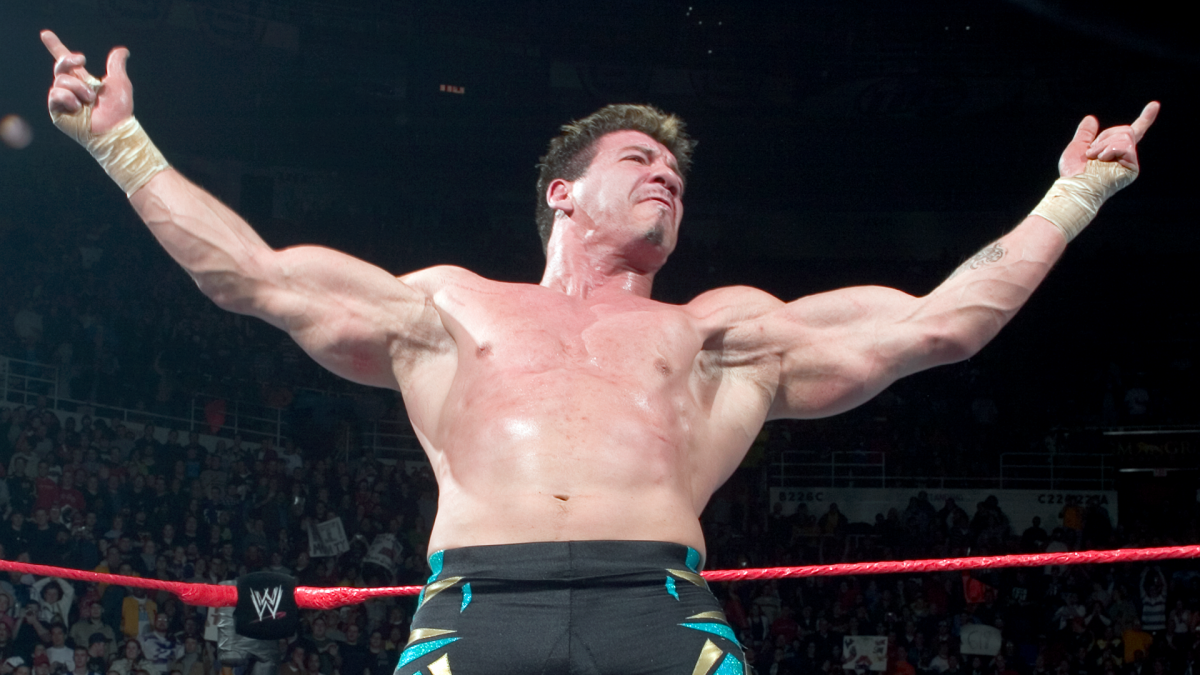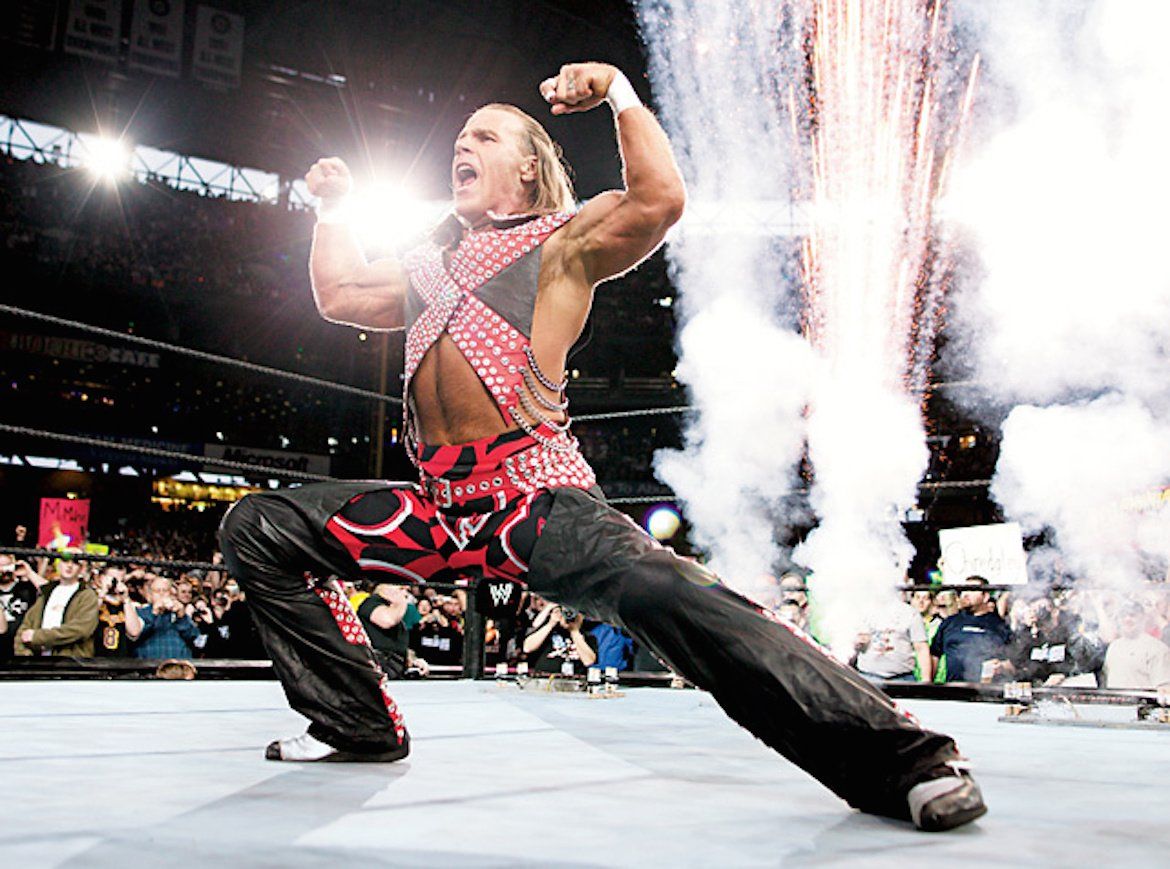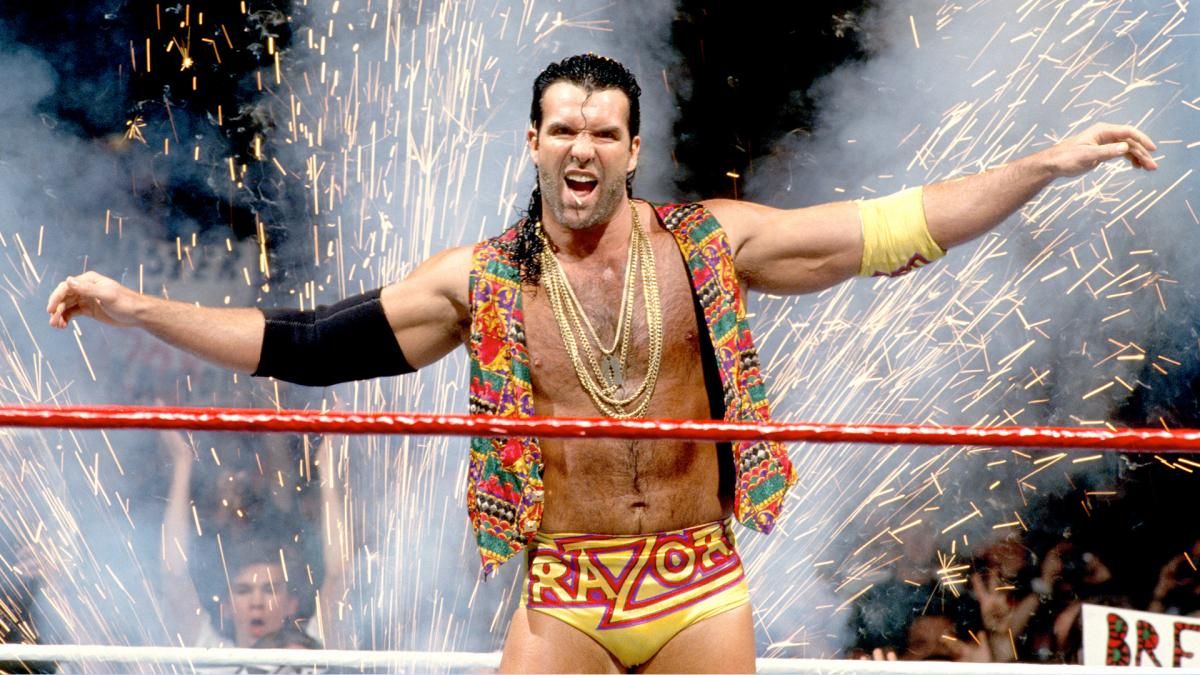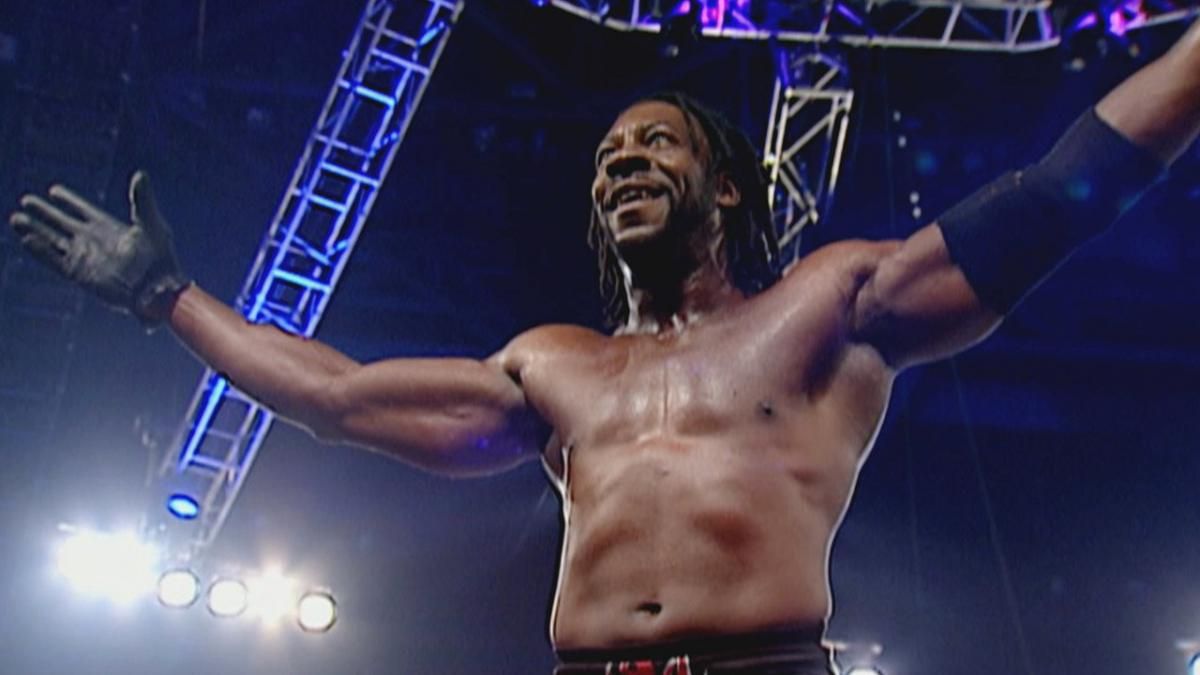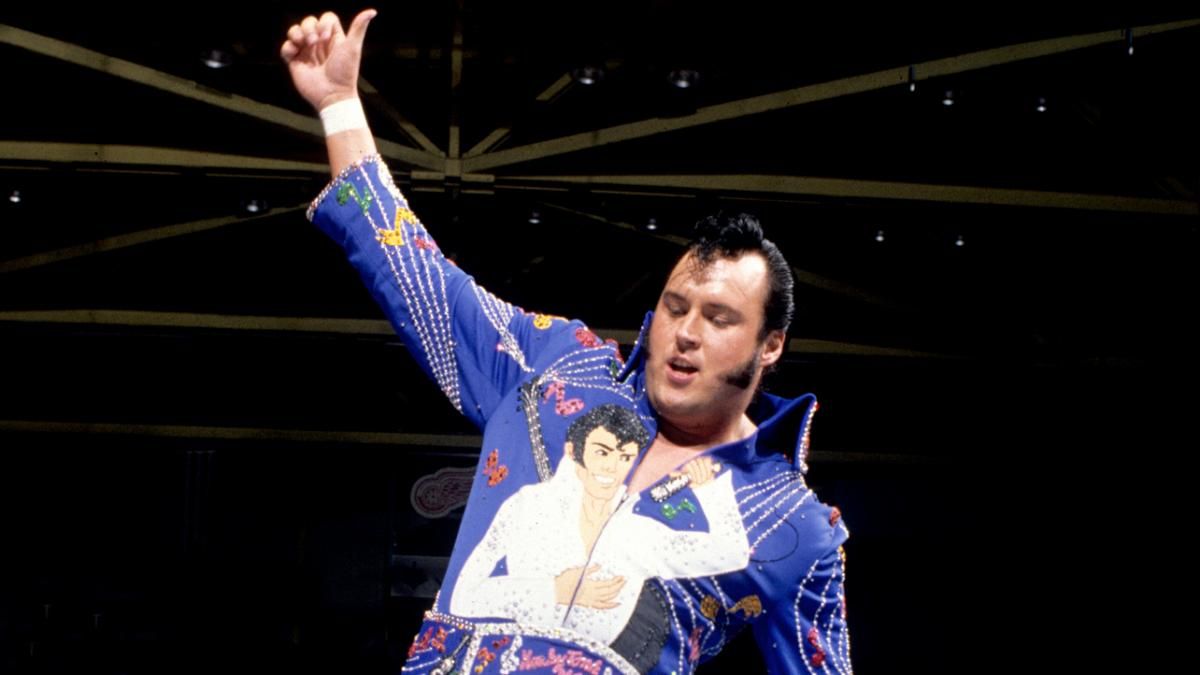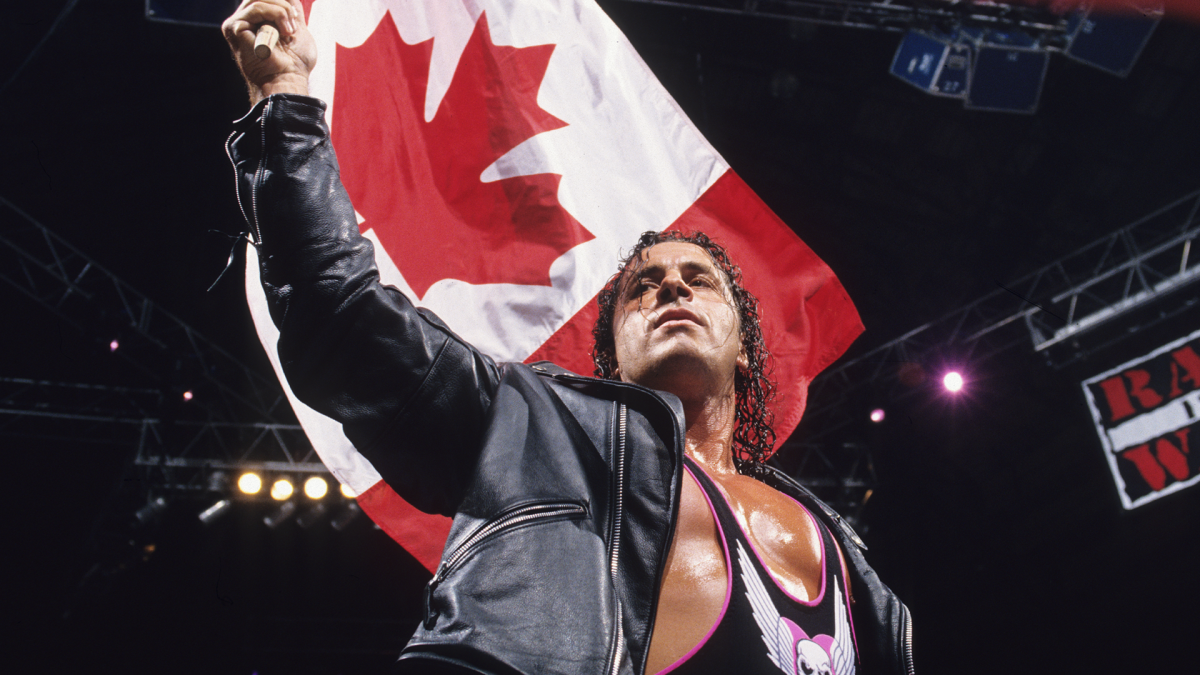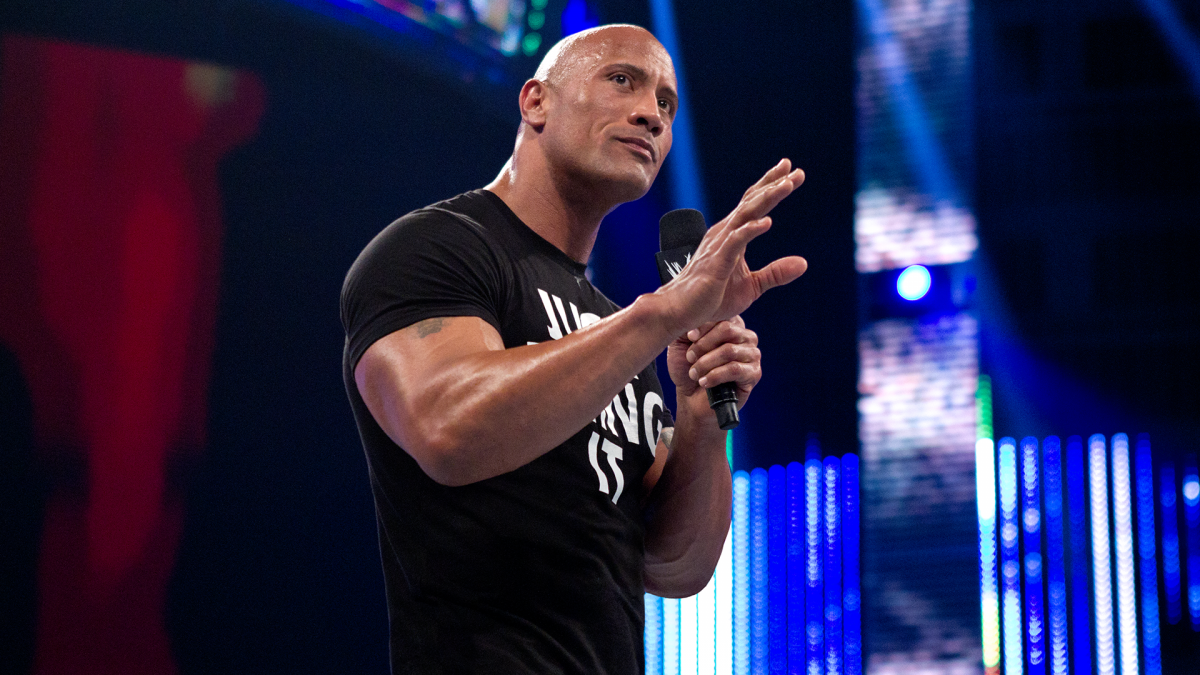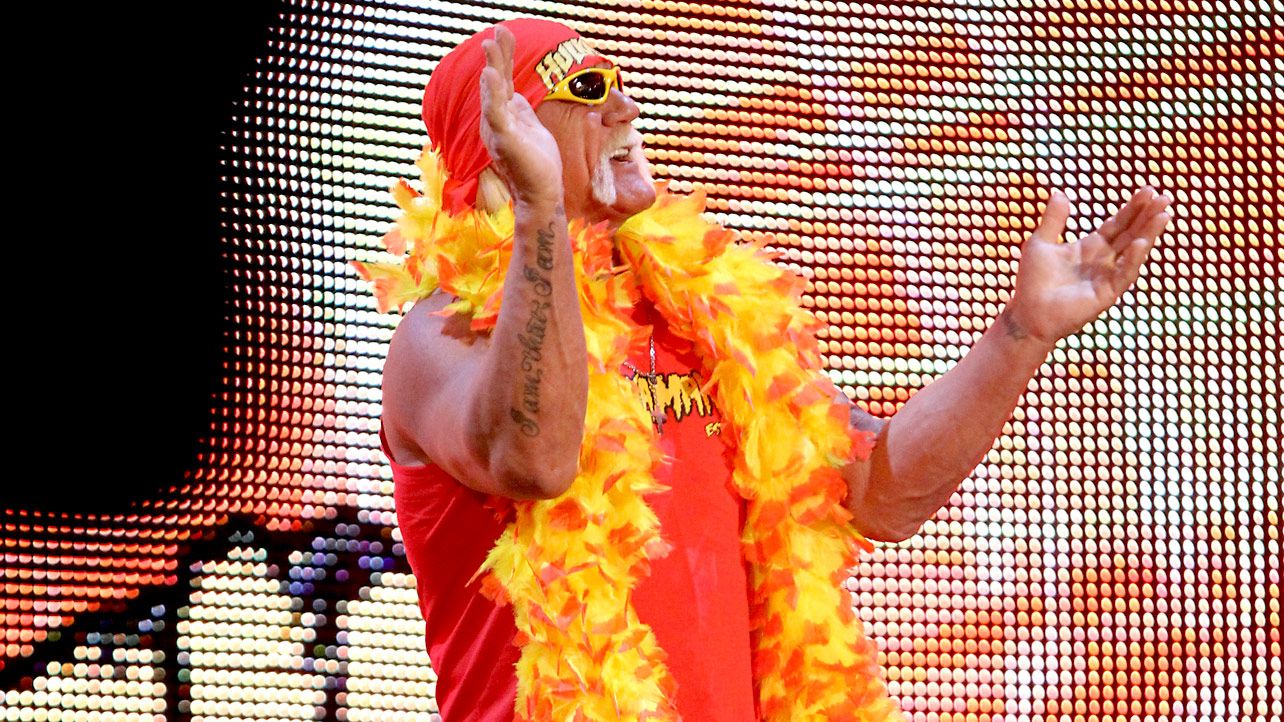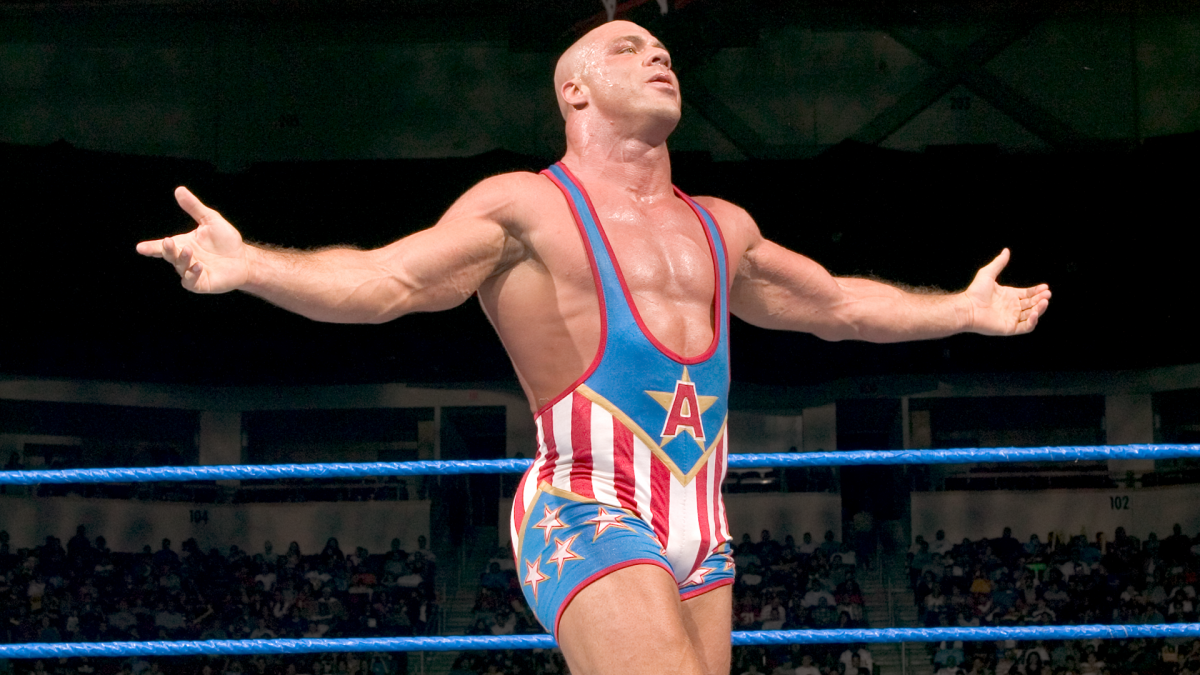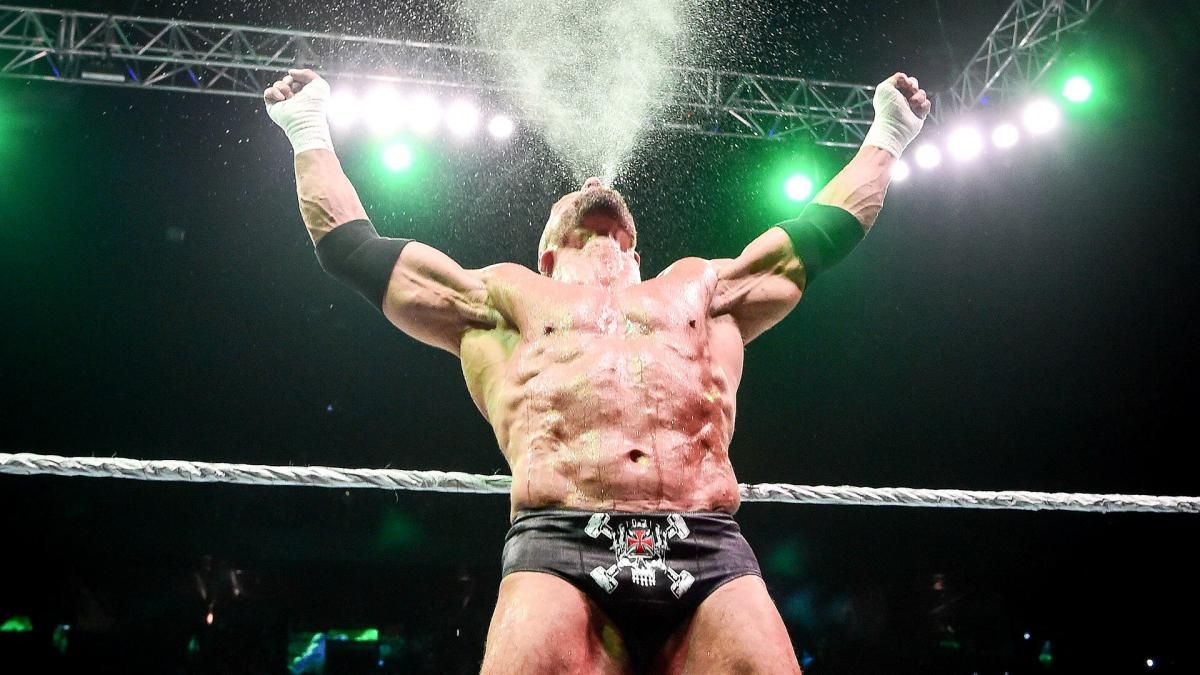Professional wrestling doesn’t really have a rookie class like major sports do. By the time a new face pops up on your screen, they may have been toiling for a decade in the minor leagues—or even in the WWE itself, only with a different gimmick and outfit. Defining what does and does not count as a “rookie class,” then, is somewhat difficult.
Still, it’s clear that the WWE, like any major wrestling company, needs to regularly bring in fresh talent. Old stars become part-timers or just too beat up to continue; midcarders become stale, boring and replaceable as young talent flames out before they can get over. With no offseason and five hours of prime television to fill each and every week, the WWE is always looking for new talent.
Some years, they’ve been more successful than others. Sometimes, a crop of wrestlers comes in simultaneously and helps define wrestling for a generation, keeping fans entertained and crowds satisfied. Other times, you get Giant Gonzales or Ludvig Borga. The quality of the new talent coming in can have a long-term impact on the product as a whole.
With that in mind, it seemed like a good time to look at the best years the WWE has ever had drawing new talent in—the years in which they made Superstars, or at least convinced them to jump from other companies.
Some ground rules: a wrestler’s rookie WWE year is defined as the first year they held a televised match with the company under any gimmick. This often contradicts “official” WWE history—they claim, for example, Randy Orton debuted in 2002, Kane debuted in 1997 and Mankind in 1996. None of these are correct and the WWE is hoping earlier memories of them are wiped form our collective minds. No such luck here. An untelevised match doesn’t start the clock; it has to have been broadcast as a WWE show somewhere, somewhen.
It’s also an all-time list and, as such, heavily biased towards years gone by. The 2012 class, which includes two-thirds of The Shield, Cesaro, and Big E. might make it onto this list one day, as could last year’s crop of stellar international NXT talent, but they need to prove some staying power in the WWE before they get on this list.
With no further ado…
15 15. 1987
All beware…The Dingo Warrior? In Jim Hellwig’s first few WWE matches, that’s the name he went under, including a match in Boston Garden against Barry Horowitz. By the end of the year, he was The Ultimate Warrior we all knew and could hardly understand. Warrior's wild promos and insane stare provided an energy unlike any other in the ring. Also debuting in ’87 was Rick Rude, one of the top heels of the late ‘80s.
14 14. 1980
Ricky Steamboat was known to fans in the ‘80s as the best pure wrestler on WWE television—the consummate babyface, Steamboat still ranks among the top technical wrestlers of all time, even today. While his first full-time stint with the WWE came in 1985, Steamboat made his Madison Square Garden debut on April 21, 1980, teaming with Jay Youngblood to take on Bulldog Brower and Tor Kamata. On the other end of the scale to Steamboat was Sgt. Slaughter; his more average wrestling skills are blown out of the water by his gimmick, which transcended the world of wrestling and got him spots on G.I. Joe. Slaughter made his WWE debut in 1980 as well, including several matches for the WWE Championship.
13 13. 1976
Ric Flair famously jumped from the NWA to the WWE in 1991, bringing the Big Gold Belt with him—but it wasn’t his first time in a WWWF ring. Twice in 1976, Flair appeared at Madison Square Garden, beating Pete Sanchez and Frank Williams. Wrestling history would be quite different if he had stuck around New York in those regional days. Bob Backlund, a two-time World Champion, made his first two WWWF appearances in ’76 as well. They were joined by Ken Patera in a very solid class.
12 12. 2000
When The Radicalz showed up in the audience on the January 31, 2000 episode of Raw, it was the biggest sign yet that WCW was imploding and that the WWE was delivering the final knockout blows to their competition. Chris Benoit and Eddie Guerrero were future World Champions, while Dean Malenko and Perry Saturn had moderate levels of success as well. Also debuting in 2000 was a new rapping sidekick for the Road Dogg named K-Kwik; you know him better today as R-Truth; still going strong in 2016.
11 11. 1988
Though they first had a dark match the year before, The Rockers first graced WWE fan’s television sets on an episode of Superstars in June of 1988. That brought us the debut of The Heartbreak Kid, Shawn Michaels, one of the few people in the business who can be put in the argument of greatest WWE Superstar of all time. Marty Jannetty was no slouch, either; while he obviously got the short end of the stick in The Rockers’ breakup, he picked up an Intercontinental Championship reign and a Tag Team Championship with the 1-2-3 Kid. What sets ’88 above some of the others on this list, though, is the addition of a masked wrestler known first as The Blue Angel and later The Blue Blazer. It wouldn’t be until 1991 that we got to see the man behind the mask—none other than Owen Hart.
10 10. 1992
Hey yo, it’s survey time: 1992 saw the WWE "say hello to the bad guy," as Scott Hall debuted, as Razor Ramon, on an August episode of Superstars. Hall’s gimmick, mic skills, and ability in the ring quickly made him one of the WWE’s biggest stars—and led to him jumping to WCW and kicking off the nWo angle a few years later. If Hall of Fame Cuban bullies aren’t your thing, perhaps you’d prefer the sheer mass and imposing figure of Yokozuna, who debuted two months later. Add in the first appearances of The Godfather—then known as Papa Shango—and Rikishi—then known as Headshrinker Fatu—and you have a fearsome foursome.
9 9. 2001
2001 should have been the most epic year for debuts in WWE history. With WCW folding, there was the chance for the greatest angle of all time in the Invasion, but that ended up petering out. We did get a few notable debuts out of the mess, of course, including future Hall of Famer and then-WCW Champion Booker T, who made history by attacking WWE Champion Stone Cold Steve Austin. The first WCWer to appear was Lance Storm, who had a decent career himself. Outside of WCW, 2001 saw the debut of Ken Anderson on episodes of Jakked—you’ll probably know him by that name in TNA, or as Mr. Kennedy in the WWE. The crowning gem, however, is one WWE swears happens the next year. On the May 6th episode of Sunday Night Heat, Billy Gunn took on and defeated one Randy Orton, beating his “official” WWE debut by more than nine months.
8 8. 1986
If you want to see history, go back and find the September 13th, 1986 edition of WWE Superstars. Randy Savage defended his Intercontinental Championship against someone named “Troy Martin”—you’ll know him better as Shane Douglas. The main event saw the World Tag Team Championship being defended by The British Bulldogs, taking on the legendary team of Les Thornton and…Jack Foley. Before Mick, before Cactus, before Mankind, and certainly before Dude Love, “Jack” Foley served as an “enhancement” talent for the WWE, losing five matches before going on to find success elsewhere. If you’re looking for more immediate impact, 1986 also saw Jake Roberts slither into the WWE for the first time, as well as the debuts of The Honky Tonk Man and Jacques Rogeau. That’s a very motley crew there, but a distinguished one.
7 7. 1998
1998 saw the debut of two “brothers”—later just good friends—as both Edge and Christian first appeared on our televisions, quickly joining Gangrel in The Brood and then The Undertaker in The Ministry of Darkness. 1998 also is responsible for pretty much the entire midcard of The Attitude Era, as Val Venis, Chyna, William Regal, and Test all made their in-ring debuts in the year. For bonus points, 1998 was the first year that Vince McMahon entered the ring as a competitor, taking on Steve Austin for the WWE Championship on an April edition of Raw. It’s a class that drops off quickly after Edge, but there’s a lot of quality depth to like here.
6 6. 1984
Maple Leaf Wrestling was a show the WWE aired, mostly in Southern Ontario. It saw a lot of talent appear on it from Stu Hart’s Stampede Wrestling, and 1984 saw two of the bigger names in the history of the business make the trek from Stampede to WWE tapings in Bret Hart and Davey Boy Smith. Outside of Canada, 1984 also welcomed former Mid-South star Junkyard Dog to the national stage, with his natural charisma getting him massively over with the fans.
5 5. 1996
Can you smell what Flex Kavana is cooking? By the time he debuted at Survivor Series, Kavana had changed his ring name to Rocky Maivia and the smiling babyface was…pretty much immediately booed out of the building. One emergency transplant of personality and attitude later, and The Rock was born. 1996 also saw a Texas cowboy named Justin Bradshaw make his WWE debut. One emergency transplant of character later, and you have The Acolyte and future WWE Champion, JBL. Two World Champions, one of them being the freakin’ Rock, makes this class rank highly in and of itself, but ’96 also saw Mark Henry, Marc Mero, and Tajiri make their way to a WWE ring for the first time.
4 4. 1979
The Iron Sheik made his WWE debut as “The Great Hossein Arab” in February, and by the end of the year, he was fighting Bob Backlund for the WWE Championship. That’s a huge name in the history of the sport. Rowdy Roddy Piper made his Madison Square Garden debut in 1979, wrestling three times over the course of the year, though he wouldn’t join the company more or less full time for another five years. That’s a huge name in the history of the sport. They are both dwarfed, however, by one Hulk Hogan, who made his MSG debut five years before becoming the World Champion and THE Hulk Hogan we all know today. Hogan, Piper, and Sheik in the same class? Try topping that one, history books.
3 3. 1999
One of the reasons The Attitude Era was so beloved was the high number of high quality wrestlers that seemed to come in on a monthly basis and ’99 was the best of the bunch. At the St. Valentine’s Day Massacre, Big Show came ripping up through the canvas to defend Vince McMahon against Steve Austin. On an August episode of Raw, a long-running countdown came to an end, and Chris Jericho debuted to go toe-to-toe with The Rock. WCW was bleeding some of it’s biggest and most talented stars, and the WWE was taking advantage. They didn’t need to just raid WCW, however—they could raid the Olympics as well, as 1996 gold medal winner Kurt Angle made his televised debut at Survivor Series. None of that trio is Hogan, certainly, but that’s three future World Champions, all in one go.
2 2. 1995
Ahmed Johnson, Rhyno, and Road Dogg would be a pretty solid threesome in any normal year, but 1995 was no normal year. Before he ripped the doors off of the Hell in the Cell as Kane, or tried to act like Kevin Nash as Fake Diesel, Glen Jacobs was Issac Yankum, D.D.S, Jerry Lawler’s own personal dentist, debuting at SummerSlam. While the gimmick was a flop, the wrestler certainly wasn’t, with Kane still going strong today. Debuting on Superstars earlier that year was a snobby aristocrat named Hunter Hearst Helmsley—who has gone on to have one of the longest careers as a main eventer in the business as Triple H. They all have to take a backseat, however, to the one, the only, The Ringmaster! Fresh out of WCW, the once-and-future Steve Austin debuted in 1995, and the rest is history. A dentist, an aristocrat, and a…ringmaster, up against a striving WCW—it’s shocking the WWE survived past 1995, much less for long enough for all three men to become legends.
1 1. 2002
Even without Randy Orton—who debuted in 2001—there’s no getting around it—the ’02 rookie class is the greatest the WWE has ever seen. You start at the top with John Cena, coming out to coin the name for the Ruthless Aggression Era while fighting Kurt Angle. Add to him Brock Lesnar, Rey Mysterio, and Batista all at the top—three very different wrestlers, three World Champions, and three of the all-time greats. Sprinkle in a few undercard debuts in Shelton Benjamin and Umaga. What a class this is—it’s a class that’s defined the WWE for nearly 15 years at this point. We’ve never seen anything like this before, and we may never see anything like it again.

